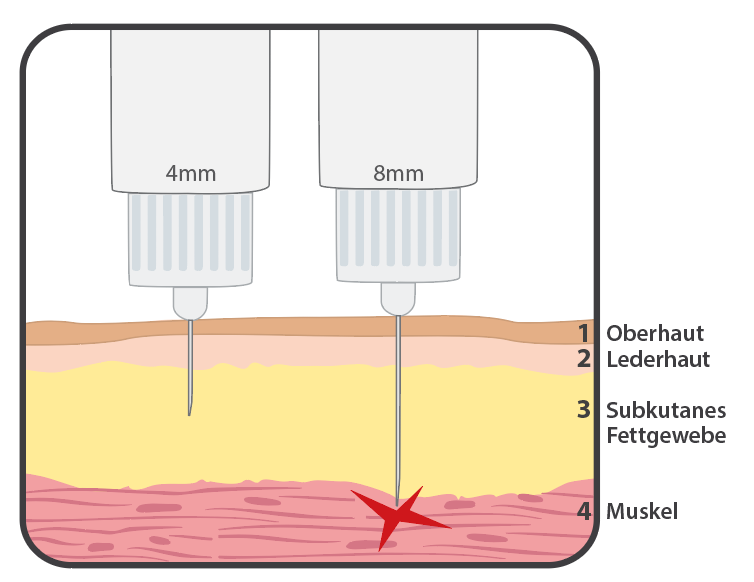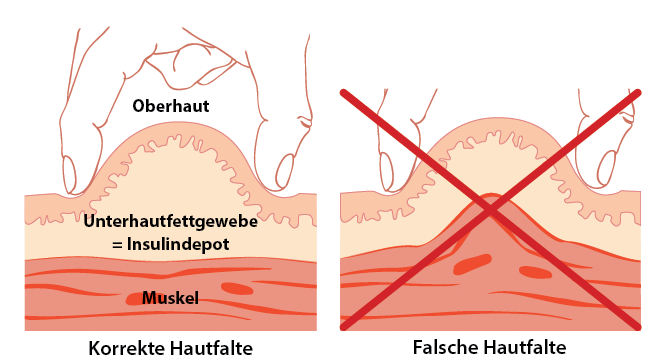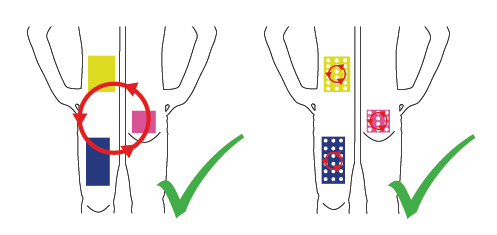How is insulin injected correctly?
Tips on injecting insulin
Insulin must be injected into the subcutaneous fatty tissue. From there it is absorbed into the body and achieves the desired effect on the blood sugar level. Accidental injection into the muscle could occur if a needle that is too long is used and should be avoided at all costs. Insulin that is accidentally injected into the muscle acts very quickly and could therefore lead to hypoglycaemia.
The formation of a correct skin fold helps to avoid such incidents. Your doctor or diabetes advisor will be happy to help you if you have questions about forming a correct skin fold and using a pen and pen needles.
The most commonly used body part for the injection is the abdomen, followed by the thighs and buttocks. The thickness of the subcutaneous fat tissuevaries greatly at different parts of the body: the thicker the subcutaneous fat tissue, the slower insulin is absorbed into the body from this site. This means that the effect of the insulin can be controlled in this way!
It is often recommended in diabetes education to use different injection sites at different times of the day. So-called injection templates can be used to practise rotating between the injection sites. You can request these templates from our customer service or you can download a rotation injection template here.



